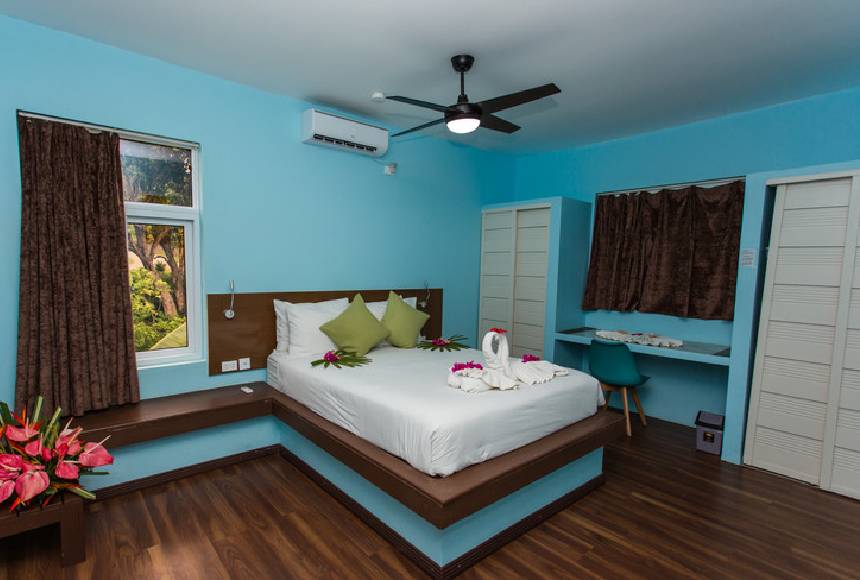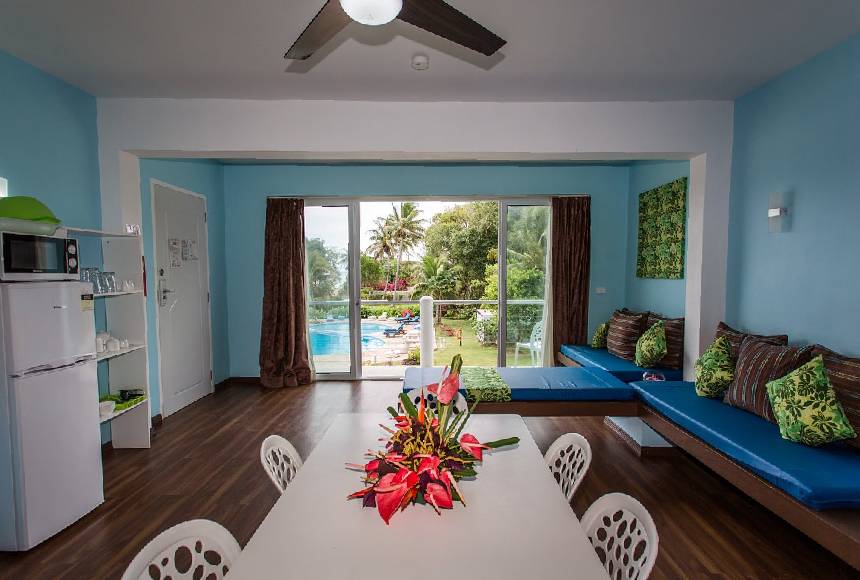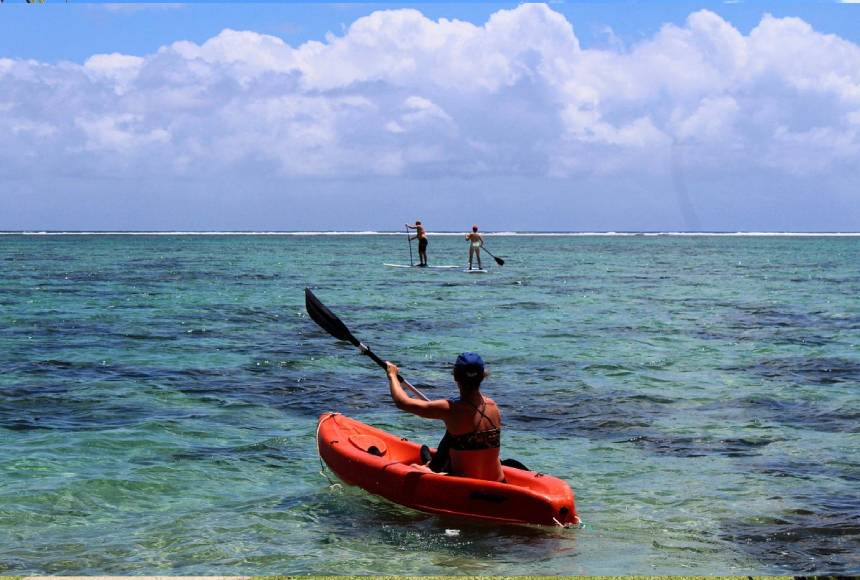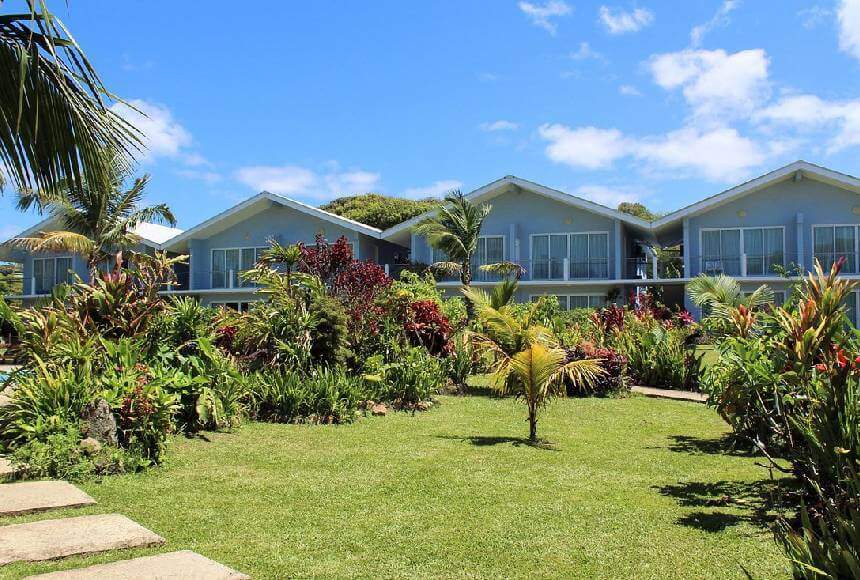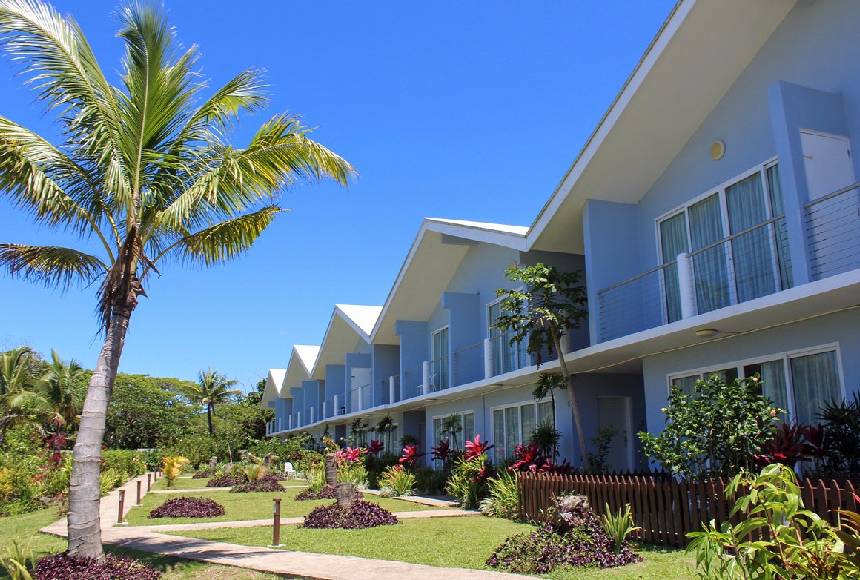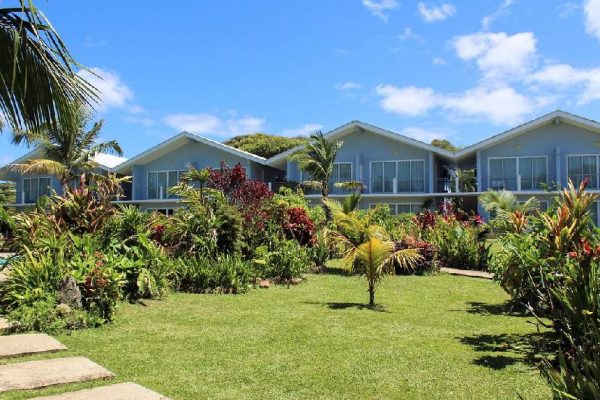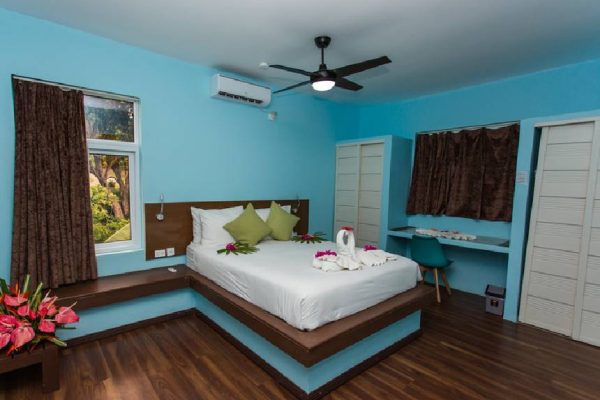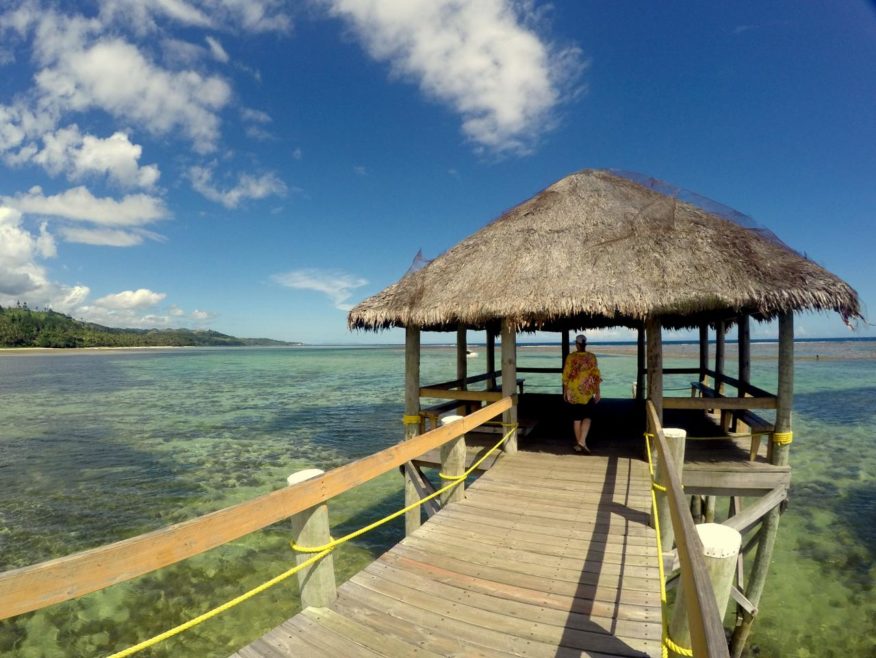The Coral Coast is an 80km (50 mile) stretch of beaches and bays along the Queens Road between Nadi and Suva.
A wide bank of coral offshore gives this stretch of coast between Korotogo and Pacific Harbour its name. Flanked by waves of richly vegetated hills and a fringing reef that drops off dramatically into the deep blue of the South Pacific Ocean, it’s the most scenic slice of the Queens Road and resorts of all standards exploit the views. Many travellers prefer to focus on inland and other highlights, such as the Sigatoka Sand Dunes, Tavuni Hill Fort, Sigatoka Valley and, near Pacific Harbour, river trips in the Namosi Highlands and diving in the Beqa Lagoon. Lounging in a resort is also a prime pursuit in these parts.
Much of the coast experiences tidal fluctuations that leave a lot of the reef exposed for long lengths of time and (except for some lagoons) it is only possible to swim and snorkel at high tide. Sovi Bay, 2.5km east of Korotogo, is one of the better swimming beaches, but be wary of strong channel currents. The photos you’ve seen of white, sandy Fijian beaches are unlikely to have been taken along the Coral Coast.
Contact us, where every inquiry takes you on a journey of personalized transfers and unforgettable tours. Your dream vacation starts with just one call!
+679 891 9111
Sports & nature
Sigatoka Valley
Whether by tour bus or on your own adventure, head inland along the west bank of the Sigatoka river. Either side of the road are the patchwork of flat green fields growing the crops that give the Valley its nickname: "Fiji's Salad Bowl." Along the way are the villages of Lawai and Nakbuta, who welcome guests and offer handicrafts and pottery for sale. The drive past Nakbuta is not for those who suffer from vertigo, as the road climbs steeply along a narrow ridge, but the reward is a panoramic view across the winding Sigatoka Valley with its quilt-like fields to the right.
The road then winds to the valley floor and Sigatoka Agricultural Research Station, a popular spot for picnic lunches. From here, the roads get rough and are strictly for the four wheel drives, but even for those who turn back, this trip is a once in a lifetime glimpse at the real Fiji.
Sigatoka Sand Dunes National Park.
The Sigatoka Sand Dunes National Park is located at the mouth of the Sigatoka River. The extensive dune system extends for several miles along the coast with dunes reaching heights of 60m (200ft). Fiji’s first National Park, this is also an archaeological site where pottery some 3000 years old has been uncovered by the shifting sands, alongside stone tools and human remains. The curious should drop into the Visitor’s centre to learn more about this unique natural location.
Kula Eco Park
Just off the Queen's Road opposite the Outrigger on the Lagoon Fiji, Kula Eco Park is Fiji's only wildlife park. The park is a cool green forest nestled in a small valley. The trees have names like Dawa, Ivi, Vutu and Vesi and tower above the valley floor filtering the sun. Visitors will hear the call of barking pigeons, the shrill of honey eaters and the constant, pulsing concert of unseen forest dwellers. This is the wild side of Fiji
So far, the Park's efforts at sustainable ecotourism have been successful. They have recently been involved in the captive breeding of Fiji's peregrine falcon and crested iguana. In addition, the education program for school children has seen the "graduation" of over a thousand members. Established in the late 80s and purchased by Kula Eco Park Management 1997, today the park is the an environmental showcase of the South Pacific.
Culture and history info
History
Korolevu, on the Coral Coast, is the birthplace of Fiji tourism. A brilliant stretch of white beach dotted by copious lush vegetation, popular back-packers, hotels and resorts still line its beautiful shore.
The place that started it all is the Korolevu Beach Hotel. Built in the 1950s by pioneer hotelier Bill Clarke on 76 acres of prime real estate, it was an immediate hit with the colonial expatriates of Australia, New Zealand and the United Kingdom.
Korolevu is believed to be the first place where individual bungalow-style units were called "bures.” Clarke was also the pioneer of cultural shows to educate guests about the local lifestyle.
Long since closed, the Beach hotel’s legacy is a still-thriving tourist industry as guests continue to arrive, drawn by Fiji’s natural beauty and Fijian’s natural hospitality.


